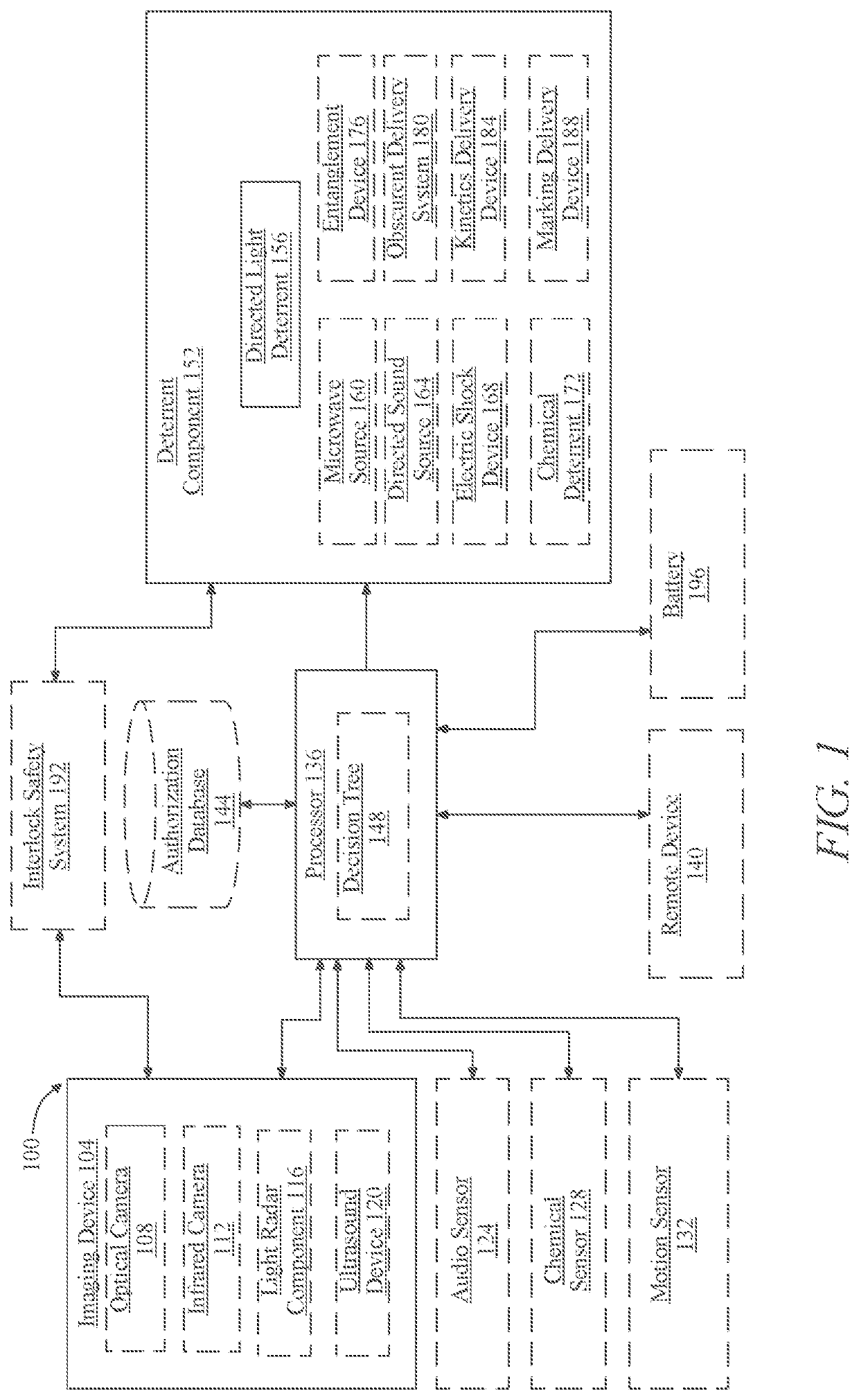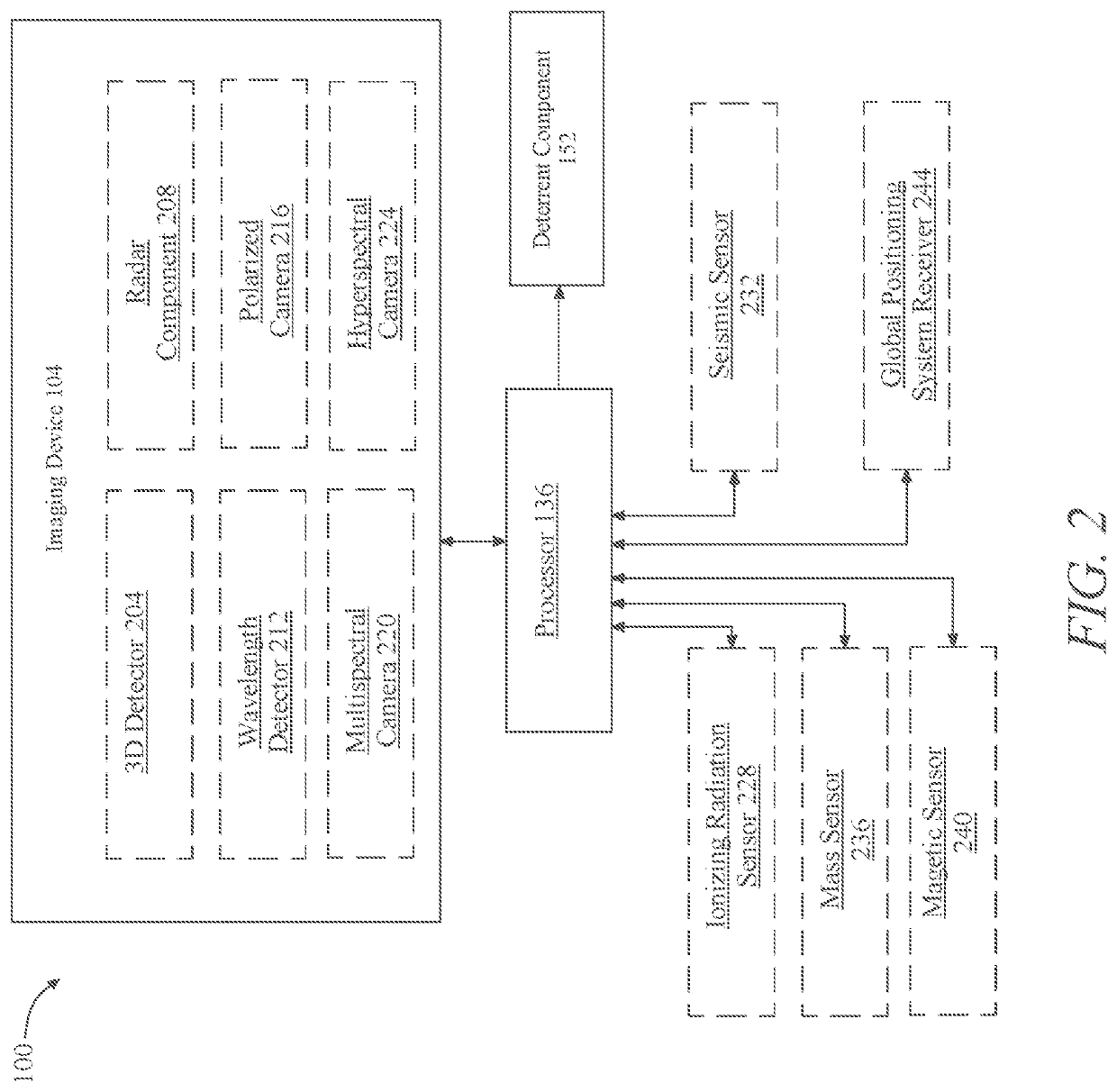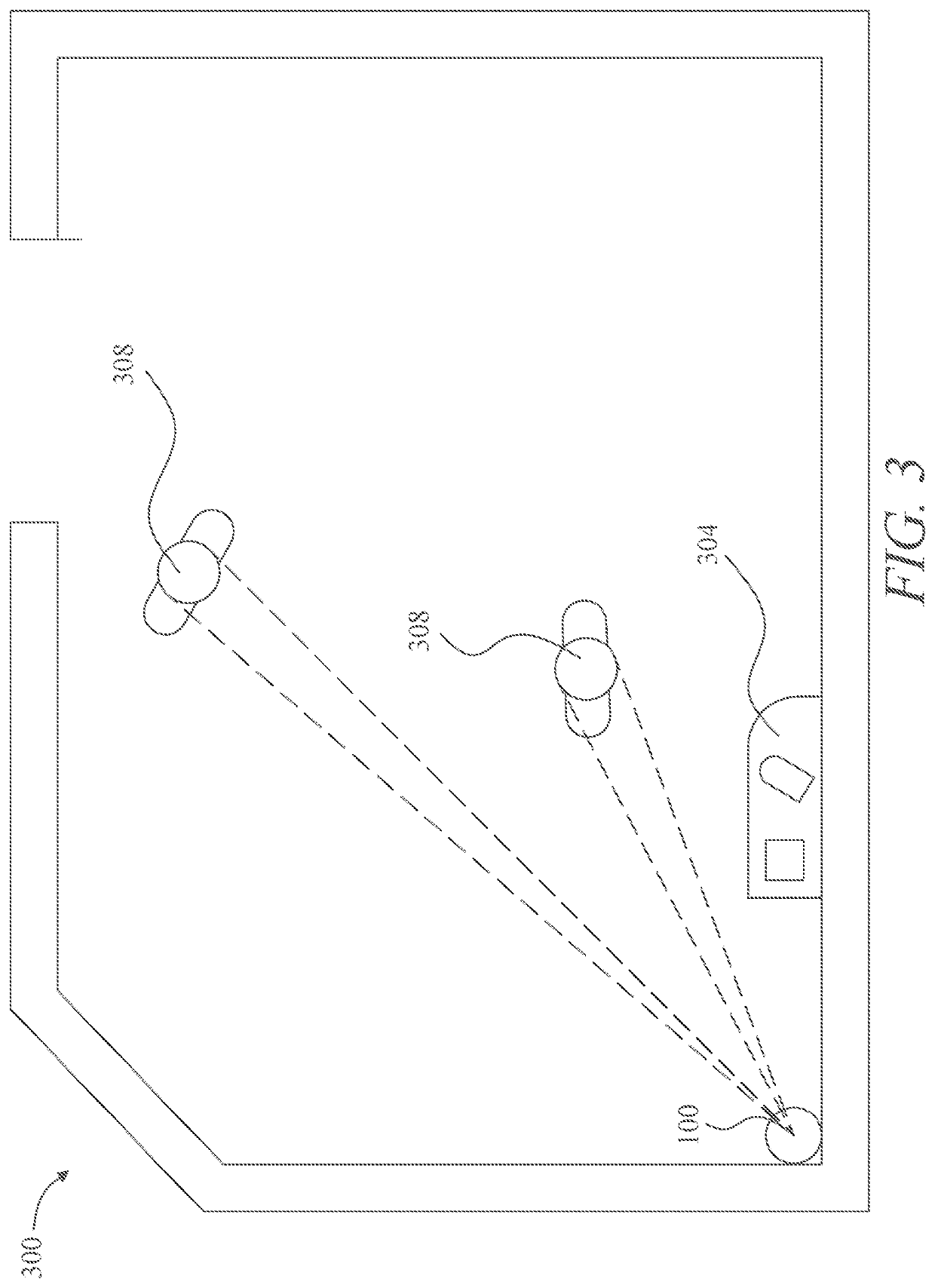Automated threat detection and deterrence apparatus
a threat detection and deterrence apparatus technology, applied in the security field, can solve the problems of prone to error, inability to distinguish between genuine threats and harmless bystanders, and high cost of human security, and is prone to error and bias
- Summary
- Abstract
- Description
- Claims
- Application Information
AI Technical Summary
Benefits of technology
Problems solved by technology
Method used
Image
Examples
exemplary embodiment 200
[0076]Now referring to FIG. 2, an exemplary embodiment 200 of apparatus 100 is illustrated. Imaging device 104 may include a 3D detector 204. 3D detector 204 may include, without limitation 3D cameras, sensors, or computational methods. 3D detector 204 may include, without limitation, optical detectors, visible photodetectors, photodetectors, infrared detectors, laser range finders, and / or light or radio frequency radar components. Components of 3D detector 204 may implement passive methods, defined as methods that do not require admission of any electromagnetic and / or acoustical energy, to determine a three-dimensional structure of a real-world scene. Components of 3D detector 204 may implement active methods, defined as methods that require emission of electromagnetic and / or acoustical energy, to determine a three-dimensional structure of a real-world scene. 3D detector 204 may process the data gathered using mathematical, temporal, and / or logical algorithms or electronics to crea...
exemplary embodiment 800
[0140]Referring now to FIG. 8, an exemplary embodiment 800 of decision tree 148 for threat determination is illustrated. Decision tree 148 may include a plurality of internal nodes 804 that evaluate one or more tests to determine behavior descriptor. Decision tree 148 may include a plurality of leaf nodes 808 corresponding to behavior descriptor determinations and / or determinations of responses to perform based on behavior descriptors. Processor 136 may traverse decision tree 148 once and / or iteratively, with each iteration potentially arriving at different behavior descriptors depending on additional data collected, outcomes and / or determinations of each previous iteration, or the like. For instance, and without limitation, if a first iteration of decision tree 148 indicated a first behavior descriptor, a second iteration with no change in data from sensors and / or imaging device 104 a certain period of time later may cause an increase in behavior descriptor. As a further example, i...
exemplary embodiment 1000
[0154]Referring now to FIG. 10, an exemplary embodiment 1000 of a directed light deterrent 156 is illustrated. Directed light deterrent 156 may include a light source 1004. Light source may include, without limitation, one or more elements of a laser, such as an electrical or optical pumping source, an amplifier, and or one or more beam shapers, homogenizers, directors, filters, focus elements, expanders or the like. Light source may alternatively or additionally include a super LED, laser illuminated LED, super-luminescent LED, EELD, VCSEL, plasma discharge lamp, and / or high intensity LED, which may be used directly, and or as an optical pumping source. Directed light deterrent 156 may include a photodiode 1016 either integral to the light source 1004, or external to the light source 1004 with the use of a beam splitter 1008 or similar optical device that directs a fraction of the outputted light energy as a sample beam 1012 to the photodiode 1016 or similar sensing device for dete...
PUM
 Login to View More
Login to View More Abstract
Description
Claims
Application Information
 Login to View More
Login to View More - R&D
- Intellectual Property
- Life Sciences
- Materials
- Tech Scout
- Unparalleled Data Quality
- Higher Quality Content
- 60% Fewer Hallucinations
Browse by: Latest US Patents, China's latest patents, Technical Efficacy Thesaurus, Application Domain, Technology Topic, Popular Technical Reports.
© 2025 PatSnap. All rights reserved.Legal|Privacy policy|Modern Slavery Act Transparency Statement|Sitemap|About US| Contact US: help@patsnap.com



